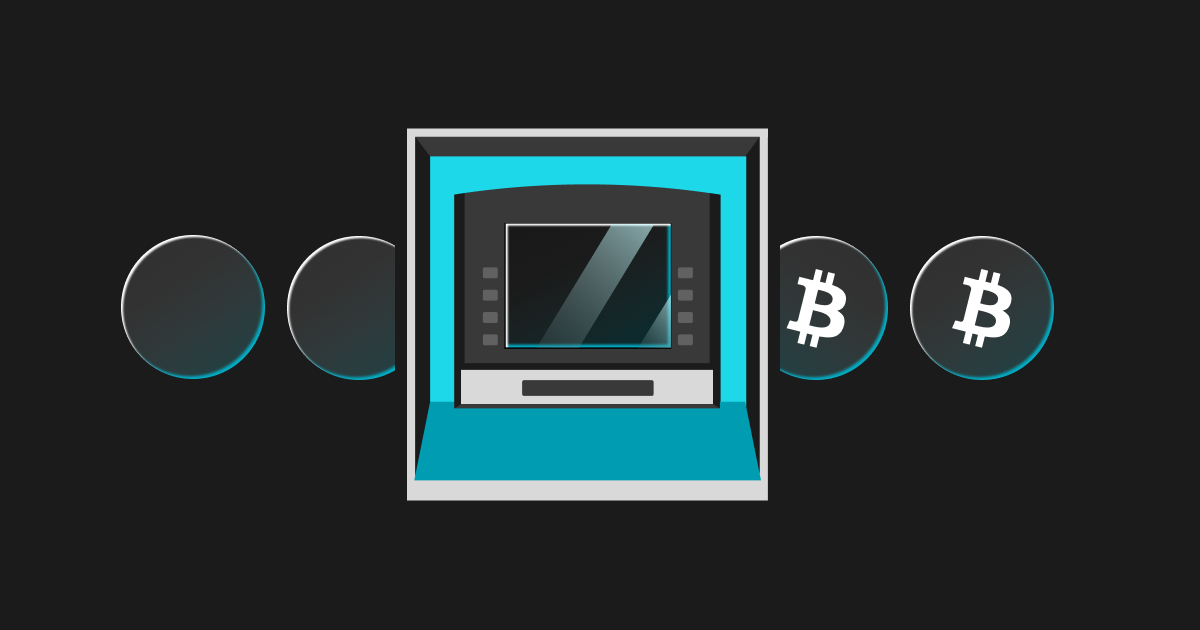
Bitcoin ATM Near Me: Comprehensive Guide to Locations, Fees & Security
The evolution of the cryptocurrency market has led to a surge in demand for seamless, accessible ways to acquire and sell digital assets. Among the most significant innovations in this space are Bitcoin ATMs, also known as BTMs. These physical machines offer a convenient bridge between traditional cash and digital assets like Bitcoin (BTC), serving as a vital entry point for newcomers and experienced investors alike. In this comprehensive guide, we cater specifically to investors who are interested in understanding the intricacies of “Bitcoin ATM near me”—covering how BTMs work, their advantages and drawbacks, associated fees, security, regulations, and guidance for maximizing your investment efficiency.
What Is a Bitcoin ATM?
A Bitcoin ATM (BKM or BTM) is a physical kiosk designed to facilitate cryptocurrency transactions, most notably buying and selling Bitcoin with cash or debit cards. Functionally, it resembles a traditional ATM that one might use to withdraw or deposit fiat money. However, rather than being connected to a bank account, a BTM connects directly to a cryptocurrency exchange or wallet service. This allows users to purchase or, at some locations, sell Bitcoin instantly—transacting either in cash or using financial cards.
BTMs are intentionally placed at high-traffic areas such as shopping malls, airports, gas stations, or convenience stores, making them accessible for the general public. Notably, some machines provide bidirectional service, meaning investors can both buy and sell Bitcoin, while others may only enable purchases. As Bitcoin ATMs become increasingly common worldwide, they are fast becoming an important physical infrastructure piece for the decentralized finance (DeFi) ecosystem.
How Do Bitcoin ATMs Work?
Understanding the workflow of a Bitcoin ATM is essential for investors, particularly those new to cryptocurrency or seeking quick market entry/exit options. The typical process consists of several core steps:
Identity Verification: Most BTMs will request some form of identity verification, especially for larger transactions, to comply with regulations. This could mean entering a phone number, scanning an ID document, or using biometric data. For smaller amounts, this step may be minimal or skipped altogether, depending on jurisdiction and operator policy.
Wallet Address Submission: Since Bitcoin is a peer-to-peer electronic cash system, you must provide a wallet address to receive funds. The ATM usually offers a scanner for QR codes, which you can generate from a compatible wallet app (such as Bitget Wallet, Trust Wallet, or others).
Initiation of Transaction: When you intend to buy Bitcoin, you deposit cash (or sometimes swipe a debit card) into the machine. The ATM then calculates the equivalent amount of BTC, including fees, and processes the transaction. For selling, you send Bitcoin from your wallet to the address displayed on the ATM. After network confirmation, the machine dispenses cash to you.
Blockchain Confirmation: Purchase transactions are often completed within minutes, although during times of high blockchain activity, delays can occur. Selling Bitcoin can take longer, as cash is only dispensed after the transaction is confirmed on the blockchain—this protects both parties from unconfirmed/malicious transactions.
The user experience at most Bitcoin ATMs is designed to be as intuitive as possible, guiding the investor step-by-step through the process from start to finish.
The Role of Crypto Wallets When Using a Bitcoin ATM
A critical requirement before using any Bitcoin ATM is having an operational crypto wallet. The wallet serves as your digital address, analogous to a bank account number, where your newly purchased Bitcoin will be sent. Many established exchanges, like Bitget, offer secure wallet solutions alongside integrated mobile apps. You can also use popular third-party wallets, provided you have access to the generated QR code for scanning at the ATM.
Security is paramount—ensure your wallet is reputable and you have safely backed up its recovery phrase. Without access to your wallet, your BTC transaction from the ATM cannot be reversed or recovered.
Fees Associated with Bitcoin ATMs
For investors, understanding the fee structure of BTMs is crucial. Bitcoin ATM fees are substantially higher compared to those on leading online crypto exchanges. While online exchanges typically charge between 0.5% and 4% per transaction (with some platforms lowering fees for high-volume users), BTMs often impose a fee ranging from 7% to as high as 20% per transaction.
The fee may be a percentage of the total transaction, a flat rate, or a combination of both. For example:
-
Buy Fees: Usually around 7–15% of the transaction amount.
-
Sell Fees: Can range from 8–20%, depending on network congestion, operator policy, and location.
-
Additional Costs: Some machines also implement minimum and maximum transaction limits, such as a $10 minimum or a cap of several thousand dollars per transaction.
Given these costs, it’s advisable for investors to carefully read the ATM’s displayed fee schedule and compare with online rates, particularly for large purchases or frequent trades. Always prioritize transparency and look for machines that display up-to-date fees alongside operator contact information and a clear real-time price feed.
Locating a Bitcoin ATM Near You
With Bitcoin’s growing popularity and the need for physical access to crypto, locating a nearby BTM has become easier than ever. There are several reliable global directories and resources, notably Coin ATM Radar and comparable platforms, which allow you to search for BTMs by country, city, or even street address.
These tools often include detailed filters, letting you locate ATMs supporting specific coins (Bitcoin, Ethereum, USDT, etc.), and whether they allow purchases, sales, or both. You can also view other important operator info: fee rates, supported payment methods, real-time status, and user reviews. It’s recommended to verify:
-
The machine’s operating hours
-
Any required forms of ID or KYC
-
Up-to-date fee disclosures
-
Machine legitimacy, as fake ATMs have occasionally been reported in the wild
For optimal efficiency, bookmarking or installing these locator apps on your smartphone is a practical move for crypto investors who travel frequently or wish to assess new markets quickly.
Bitcoin ATM Market Coverage and Global Trends
As of mid-2024, there are over 35,000 Bitcoin ATMs worldwide, with major concentrations in the United States, Canada, and parts of Europe. Penetration in Asia and South America is increasing as regulatory clarity improves and demand for crypto access rises. This growth is a signal of both surging interest from ordinary consumers and the institutionalization of crypto infrastructure.
The rapid installation of BTMs is part of a larger movement to bring digital assets into mainstream financial life—granting more people direct, physical, and anonymous (up to certain limits) access to the decentralized economy. However, coverage may still be sparse in rural areas or developing markets, and investors traveling internationally should research ATM presence and legal status before arrival.
Pros and Cons of Using Bitcoin ATMs
Proper due diligence demands an understanding of both the strengths and restrictions of BTMs, especially from an investor’s standpoint.
Advantages:
-
User-friendly Access: Offers an uncomplicated way for investors—especially first-time users—to purchase cryptocurrencies with cash, bypassing the sometimes lengthy onboarding/KYC process found on exchanges.
-
Speed: Purchases can be nearly instantaneous, allowing quick market entry or exit (depending on cash/network availability).
-
Privacy: Lower KYC thresholds for small transactions enable users to acquire modest amounts of BTC semi-anonymously, appealing to privacy-conscious holders.
-
No Bank Account Needed: BTMs are ideal for the unbanked or users in regions where bank access is restricted.
Drawbacks:
-
High Fees: Much more expensive than online trading platforms, eroding investment returns, especially on larger sums.
-
Authentication Variability: Some machines lack robust AML/KYC, which carries both legal and personal risks.
-
Security and Fraud Risks: Users are vulnerable to scams (e.g., being tricked into sending BTC for purported services or debts) and physical theft, particularly in isolated locations.
-
Limited Coin Selection: While Bitcoin is almost universally supported, access to other coins may be restricted.
-
Cash Handling: There are still risks and inconveniences inherent to carrying and depositing significant cash amounts at public terminals.
Investors must carefully weigh these characteristics based on their risk tolerance, investment strategy, and privacy priorities.
How to Use a Bitcoin ATM: Step-by-Step
For those new to the process, using a Bitcoin ATM generally involves the following:
-
Prepare Your Wallet: Set up a secure digital wallet that can generate a QR code. Ensure you have control over the recovery phrase and private keys.
-
Find Your Nearest Bitcoin ATM: Use Coin ATM Radar or similar apps to locate a machine—verify its features and fee structure before visiting.
-
Identity Verification: Be prepared for KYC requests. For small transactions, a phone number may suffice. Larger transactions commonly require an ID scan or further documentation.
-
Initiate Transaction: Select whether you wish to buy or sell Bitcoin.
-
Submit Wallet Address: Scan your digital wallet’s QR code at the ATM for receiving the purchased coins.
-
Add Cash or Swipe Card: Insert the fiat currency or swipe a compatible debit card, entering the desired amount.
-
Confirm Transaction: Follow on-screen instructions to confirm the transaction, factoring in the displayed rate and fees.
-
Final Confirmation: Wait for blockchain confirmation. Purchased Bitcoin should appear in your wallet shortly; for sales, cash is dispensed once the network confirms receipt.
Be sure to retain any receipts or digital confirmations provided by the ATM; these are critical for tracking your trades and for dispute resolution.
Regulatory Landscape for Bitcoin ATMs
Regulation is a defining factor for the continued legitimacy and growth of Bitcoin ATMs. In the United States, BTM operators are considered Money Service Businesses (MSBs) and must register with the Financial Crimes Enforcement Network (FinCEN). Obligations include:
-
Anti-Money Laundering Compliance: Strict AML frameworks and reporting requirements
-
Know-Your-Customer Procedures: KYC standards for user verification, especially beyond minimum thresholds
-
State-Level Licensing: Varies by jurisdiction—some states require separate licensure or regulatory approval
-
Record Keeping: Operators must retain customer transaction data for specified durations
Internationally, regulations differ. Europe and Canada have generally followed suit with similar registration, compliance, and reporting expectations. Asia and Latin America are catching up, and regulatory clarity is rapidly evolving. For investors, it’s vital to understand the local legal climate and ensure that machines operated in their region are fully compliant.
Security Concerns and Fraud Prevention
With any new financial technology, the threat of fraud and malpractice exists. Bitcoin ATMs are no exception:
-
Fraudulent ATMs: Ensure you use only machines operated by reputable companies, ideally those listed on major directories or exchange partners. Scrutinize physical signs of tampering.
-
Scams: Never send Bitcoin to wallets as demanded via calls, emails, or text messages—classic signs of scams (IRS, law enforcement, “ransom,” or “tech support” impersonators).
-
Private Information Protection: Only submit personal information within the secure ATM interface. When in doubt, ask for operator contact details before proceeding.
-
Physical Security: Given ATMs typically involve cash deposits or withdrawals, always be aware of your surroundings and avoid suspicious behavior or individuals near the terminal.
Ultimately, the responsibility for safe engagement rests with the user: verify, double-check, and never proceed with a transaction you do not fully understand.
Alternatives to Bitcoin ATMs for Crypto Investors
While Bitcoin ATMs are invaluable for certain use-cases or contingencies, many investors may find better value or convenience through:
-
Centralized Crypto Exchanges: Online platforms like Bitget, Coinbase, or Binance, which offer tighter spreads, lower fees, deeper liquidity, and advanced features (staking, margin, etc.).
-
Peer-to-Peer (P2P) Platforms: Secure venues for buying and selling crypto directly with other users, often with escrow protection and customizable payment methods.
-
Retail Integrations: Increasingly, retail point-of-sale systems allow direct purchase of gift cards and crypto debit cards with Bitcoin, broadening off-ramp and on-ramp options.
Such platforms typically offer more competitive rates and a wider asset selection. For larger or recurrent transactions, leveraging a reputable exchange remains a best practice.
Should Investors Use a Bitcoin ATM?
Deciding whether to use a BTM depends on individual circumstances and investment goals. Bitcoin ATMs offer unmatched accessibility and speed—especially for buying smaller amounts with cash—but do so at the expense of higher fees and some security risks. Investors prioritizing privacy, speed, or who are unbanked may find BTMs uniquely valuable. Conversely, those focusing on cost efficiency, large-scale trading, or regular transfers should consider leveraging regulated exchanges for improved terms and features.
For most professional investors, BTMs are best viewed as a supplementary tool, ideal for fast, occasional transactions rather than ongoing strategy.
Conclusion
Bitcoin ATMs have become a fixture in the rapidly evolving intersection of traditional finance and digital assets. For investors, they offer one of the fastest and most accessible gateways to Bitcoin ownership, with the convenience of physical cash management. Yet, as with all investment vehicles, due diligence around fees, regulatory compliance, security, and market volatility is essential.
Understanding exactly “how Bitcoin ATMs work” and being able to reliably locate a “Bitcoin ATM near me” empowers investors to make informed, strategic decisions in cryptocurrency acquisition. As the BTM landscape matures, and as adoption grows, these machines will likely become even more integral to the global financial infrastructure.
Disclaimer: This content is provided for informational and educational purposes only and should not be construed as financial or investment advice. Cryptocurrency investments are subject to high risk, substantial volatility, and regulatory scrutiny; always conduct independent research and consult a qualified advisor before making significant financial decisions.



